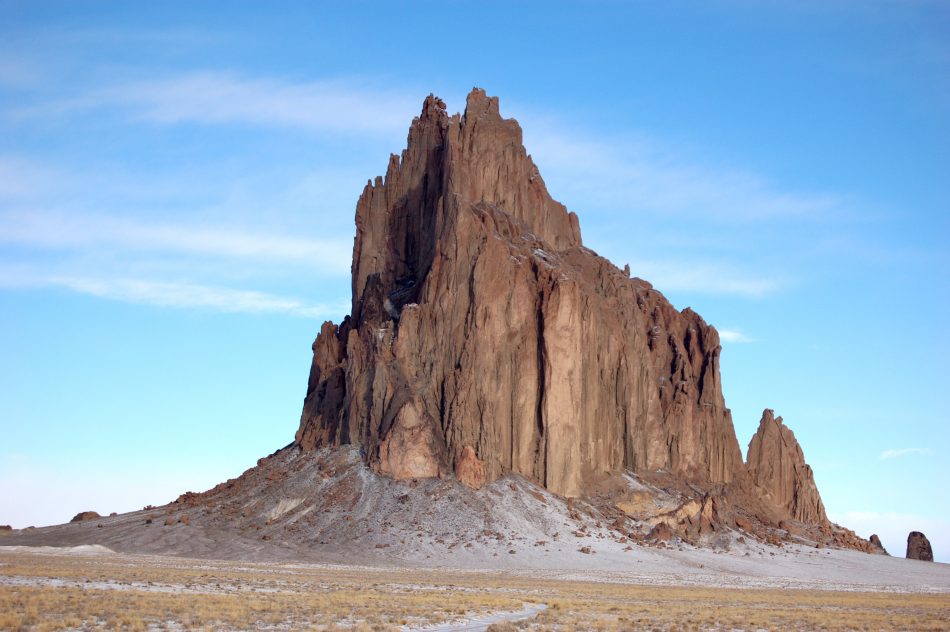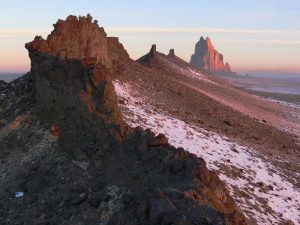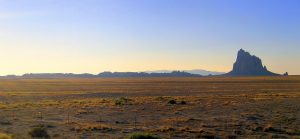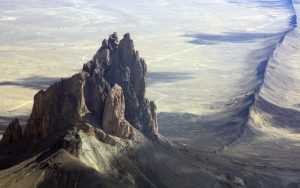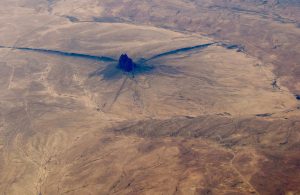A photograph of Ship Rock, Navajo Nation, New Mexico, USA. CC BY Bowie Snodgrass via Wikimedia Commons.
It is easier to appreciate using the 3D navigation in google maps. It has some pretty impressive almost radial ridges several kilometres long.
Let’s see more of this:
According to Wikipedia, the geological term for those ridges is dyke, and Ship Rock would be an instance of a volcanic plug.
A Thunderbolts article on this formation argues for en electrical origin:
Fulgurites are created when an electrical discharge strikes the ground and fuses material from the surrounding area, forming an underground impression of the stroke. An accumulation of solidified soil and sand is left behind. After the fulgurite is formed, later more diffuse electrical erosion strips the landscape down to below the level of the fused material, exposing the hardened formation.
A significant aspect of Shiprock’s surroundings is the web of “lava dikes” that stretches out from the base of the prominence into the desert. Thought to be part of the eruptive event(s) that formed the structure, the dikes are ridges of metamorphic rock left behind by the erosion of softer overlying sediments. According to standard geology, they are fingers of magma that melted their way along the weak points of the sedimentary layers and then solidified when the volcano became extinct. Examples of such lava dikes are found on Mars, as well. Because Mars does not have the atmospheric density necessary for much erosion and has no running water, it suggests that the dikes formed in some way other than weathering. They have all the earmarks of dual ridge trenches with unusual ripples that flow alongside. In past Picture of the Day articles, trenches of similar morphology have been identified with electric arc discharges.
Bowie Snodgrass via Wikimedia Commons

